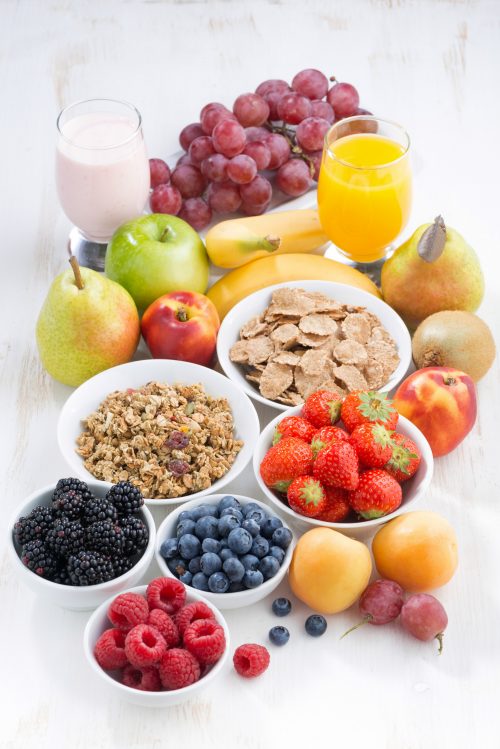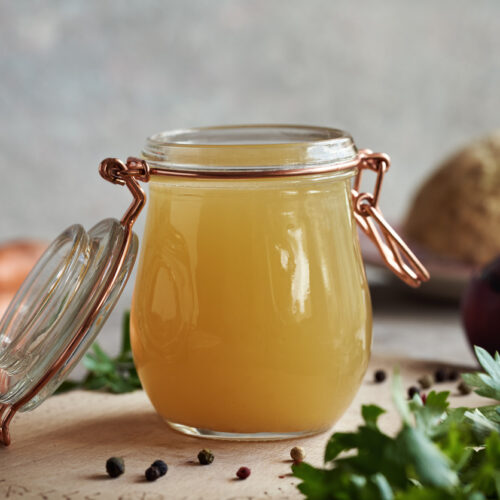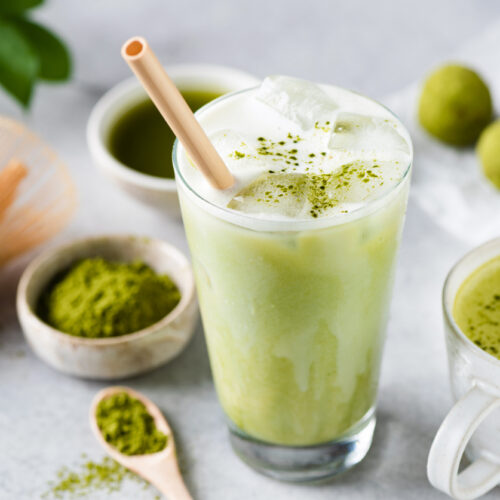
We all know we need it, and it’s good for us. But just how do we get enough fibre to keep us healthy?
I can remember my grandmother sprinkling bran on her porridge every morning, and Grandpa eating prunes. ‘Roughage’ was all the rage: “To keep one regular, dear,” I learnt as a child.Its popularity, under its modern name of fibre, grew again in the 1970s, largely due to Dr Denis Burkitt. He put a lack of so-called ‘western’ diseases seen amongst rural Africans down to their native eating habits, high in fibre-rich seeds, nuts and vegetables. Further promotional success came in the 1980s when the F Plan diet (F for fibre) became the new slimming fad. Since then fibre has been a little overshadowed by a fixation on fat and, more recently, glycaemic index or GI.
So were our grandparents right? In essence, yes, dietary fibre is an important component of our food. Grannie’s sprinkling of pure bran, easily confused with flakes of cardboard, was probably not entirely necessary though, as her porridge alone would have provided a good dose of fibre for one meal.
What it is and what it does
Fibre used to be defined as the plant material that passed through the body undigested. While this is still largely true, it does fibre a bit of a disservice, implying it is inert and possibly unimportant.
The very fact that much fibre passes through us from tip to toe is the basis of one of its important functions. This fibre is known as insoluble, acting like a human bottlebrush, picking up waste along the way, taking it, literally, to the dump’! Its accomplice, soluble fibre, soaks up water, making waste material larger, softer and easier to move through the system.
And this is a situation where three is not a crowd. To work at their best, soluble and insoluble fibre need water, in any form – tea, coffee, juice or water-containing foods as well as water itself. Next time you wet a hard, dry sponge, watch it plump up and feel it soften. This is the effect water has on fibre and, in turn, our faeces. This is especially true in the summer. Without enough water, the body will conserve as much as possible, taking it out of our system, making the ‘sponge’ drier and harder.
How much fibre do I need?
The latest dietary recommendations in New Zealand and Australia suggest women should be eating 25g of fibre a day, men 30g, and even higher to reduce long-term illnesses such as heart disease and some cancers. At the moment, most of us are falling short of these targets – on average, New Zealand women consume 18g a day, men 23g. But what do these recommendations mean in terms of food? Are we faced with eating loaves and loaves of wholemeal bread, or will just an apple a day suffice? Rest assured, if, like Billy Connolly, you consider wholemeal bread’s only use is as a frisbee, there are plenty of high-fibre foods from which to choose.
Everyday high-fibre meals
Here are some easy ways to increase the fibre content of everyday meals without changing foods completely. Just a few additions and adjustments can increase the fibre content dramatically.
Fibre-rich tips for breakfast
- Start by making sure you have breakfast – it’s a good meal for fibre-rich foods.
- Top breakfast cereals or porridge with stewed fruit or fruit compote.
- Add fresh fruit; whatever is in season.
- Mix high- and low-fibre cereals together if you find a high-fibre one too much first thing in the morning: I often mix cornflakes with muesli and fruit.
- Try one of the high-fibre white breads if you don’t enjoy wholemeal.
- Add peanut butter as a high fibre spread; marmalade and jam contain very little fibre, despite the peel and pips!
- Try a bran muffin instead of a chocolate one.
- If you avoid gluten or wheat, fruit salad is a great high-fibre way to start the day.
Small changes to add more fibre at breakfast
| TYPE OF CEREAL OF BREAD | FIBRE (g) | ADDITIONS / TIPS |
TOTAL FIBRE (g) |
| 2 slices white bread | 1.6 | Top with 1 chopped banana | 3.5 |
| 2 slices high-fibre white | 2.6 | Add 1 tablespoon peanut butter | 3.5 |
| 1 cup cornflakes | 1.2 | Replace 1/2 cup with muesli | 6.5 |
| 1 cup porridge | 2.1 | Add 1/2 cup stewed apricots | 5.1 |
Note: Fibre content will differ slightly depending on the brand of bread or cereal.
Fibre-rich tips for light or main meals
- As well as the high-fibre varieties of loaf-style bread, wholemeal pita and scones are also available.
- Rye crispbreads offer more fibre than plain varieties such as water biscuits or rice crackers.
- There is a large range of muesli bars available now. They offer a high-fibre alternative to chocolate or lollies at the ‘munchy’ times of day; but check the brand you choose carefully. The sugar and fat contents can vary considerably.
- Add fibre-rich salad or vegetables to sandwiches and wraps, such as tomato, grated carrot, lettuce, avocado, sliced capsicum and beetroot.
- Chopped carrot or celery served on the side is another way to add fibre to a sandwich lunch.
- Toast seeds, such as pumpkin, sunflower or sesame, and sprinkle over a salad; they are tasty, attractive and add some fibre.
- Baked kumara and pumpkin make good salads for summer: try them with feta cheese and some of the toasted seeds.
- Canned or fresh, cooked corn added to a salad is another high-fibre addition.
- If brown rice and pasta seem a bit ‘hippy’ to you, try mixing them with the white varieties at first. Brown rice has a nuttier flavour, and brown pasta makes an attractive addition to a pasta salad.
- Potatoes are good everyday fibre foods, particularly when in their skins; if using frozen potatoes, go for wedges with skins, rather than skinless shoestring fries.
- Add lentils, chickpeas or beans to a casserole, they’ll make it go further and increase the fibre. They go well in salads too, although when using lentils, try the brown and puy varieties, as red lentils will be too soft. If you’re looking for ideas on how to incorporate legumes into your diet, there are plenty of tasty bean recipes on this website; have a look through the recipe section.
- Homemade soup is a good high-fibre snack meal, as well as being a great way to use up leftover vegetables.
- A couple of pieces of fresh fruit are easy to take in a packed lunch. Choose whatever is in season, when it’ll be tastiest and cheapest.
- A handful of dried fruit or nuts are also quick and easy fibre boosters.
- Fruit in any form makes a good fibre-containing dessert.
- Try adding fruit or toasted muesli to yoghurt.
Small changes to add more fibre at lunch and dinner
| Food | Fibre (g) | Additions / tips | Total fibre (g) |
|---|---|---|---|
| Wholemeal ham sandwich | 3.2 | Add 1/2 avocado a a sliced tomato | 8.2 |
| 6 rice crackers with cream cheese | 0 | 2 rye crispbread with 2 tablespoons hummus | 2.4 |
| Small bar milk chocolate | 0.4 | Mixed fruit muesli bar | 1.3 |
| 20 shoestring fries (baked) | 1.8 | 10 wedges (baked) | 4.0 |
| 1 cup chicken and vegetable casserole | 2.5 | Add 1/4 cup chickpeas | 3.9 |
| 1 cup cooked white rice | 1.3 | Replace 1/2 with brown rice | 2.5 |
| 1 cup canned mushroom soup | 0.3 | 1 cup homemade pumpkin soup | 4.8 |
| Pottle of fruit yoghurt | 0.3 | Add 1/2 kiwifruit and 2 tablespoons toasted muesli | 2.6 |
Note: Fibre content will differ slightly depending on the brand of bread or cereal.
Quality and quantity
In New Zealand, we chomp our way through 14 million cans of Wattie’s baked beans each year, but obtain most of our fibre from five main sources: bread, vegetables, fruit, potatoes/kumara and breakfast cereals.
Together, these foods give a mixture of both soluble and insoluble fibre, so by concentrating on increasing the quantity, the quality will look after itself.
As a recent newcomer to Central Otago during the apricot season, I can personally vouch for the disadvantages of relying too heavily on just one high-fibre food. Time for some baked beans!
Fibre supplements
The most common use for fibre supplements is in the long-term treatment of constipation, or in the regulation of bowel movements in disorders such as irritable bowel syndrome.
There are several available, and some new products that dissolve completely are undetectable in liquids. For convenience there are also fibre capsules, which contain small amounts of fibre. This means you have to take a few to achieve a similar dose to the powders; up to 6 or more. Supplements can interfere with other medications, so should be taken separately. Supplements are not a good ‘night cap’, with the potential to give midnight stomach cramps if taken just before bed.
There is some evidence to show fibre supplements can reduce a moderately raised cholesterol level.
Under normal circumstances high-fibre foods themselves help to fill us up, so can provide all the fibre we need. Too much fibre all at once – also one of the possible side effects of supplements – can cause the problems too many of us will probably have experienced – the hard, dry sponge or the other ‘loose’ extreme.
Fibre should be introduced into your daily eating pattern gradually, and it’s essential to drink plenty.
www.healthyfood.com










